About 25 years ago, Andy Miller learned he had hypothyroidism, a condition that afflicts millions of other Americans. Curious about how this condition was affecting others, the KFF Health News journalist interviewed endocrinologists who treat hypothyroidism and several patients who live with it. Their stories revealed how mystifying thyroid and autoimmune conditions can be.

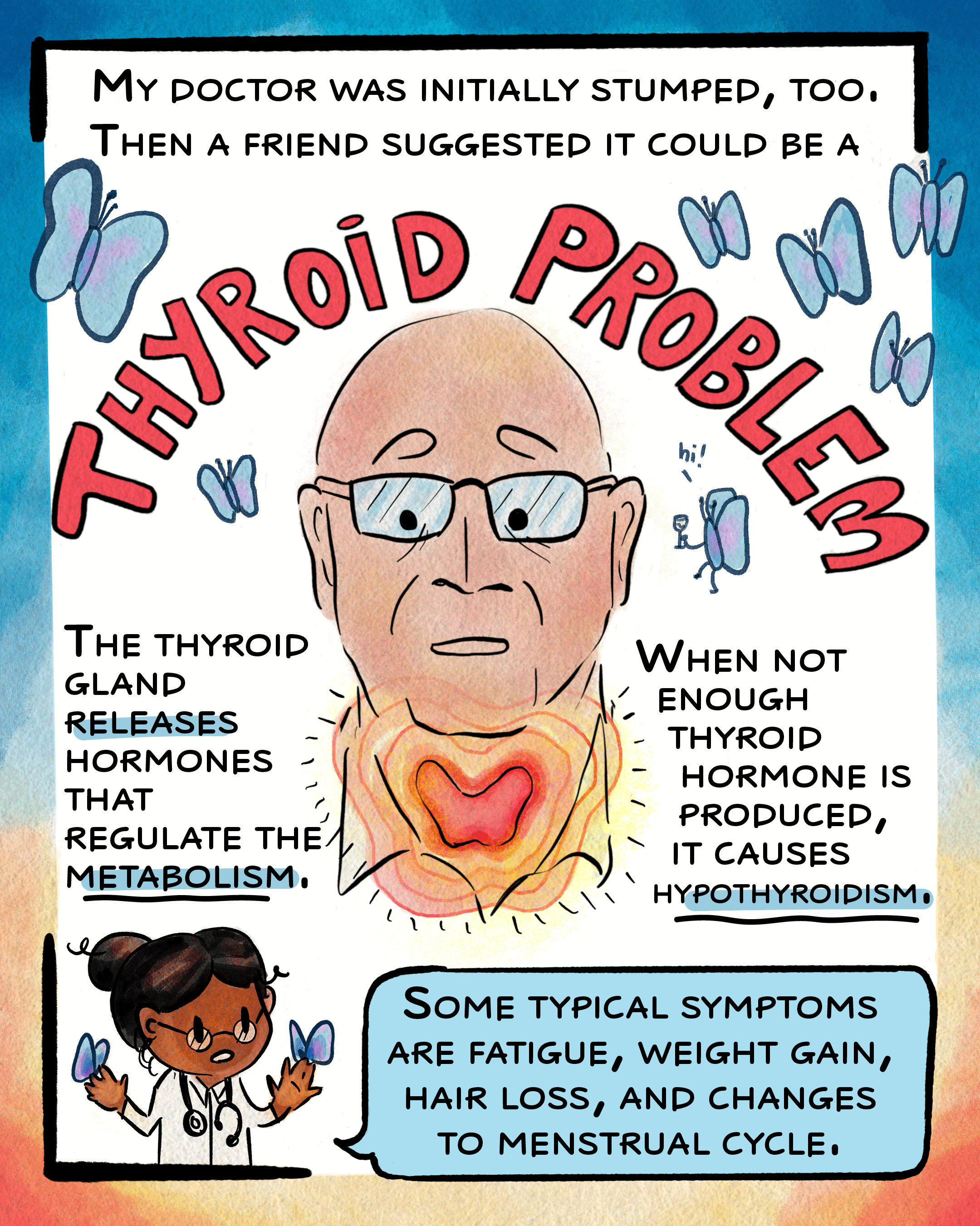
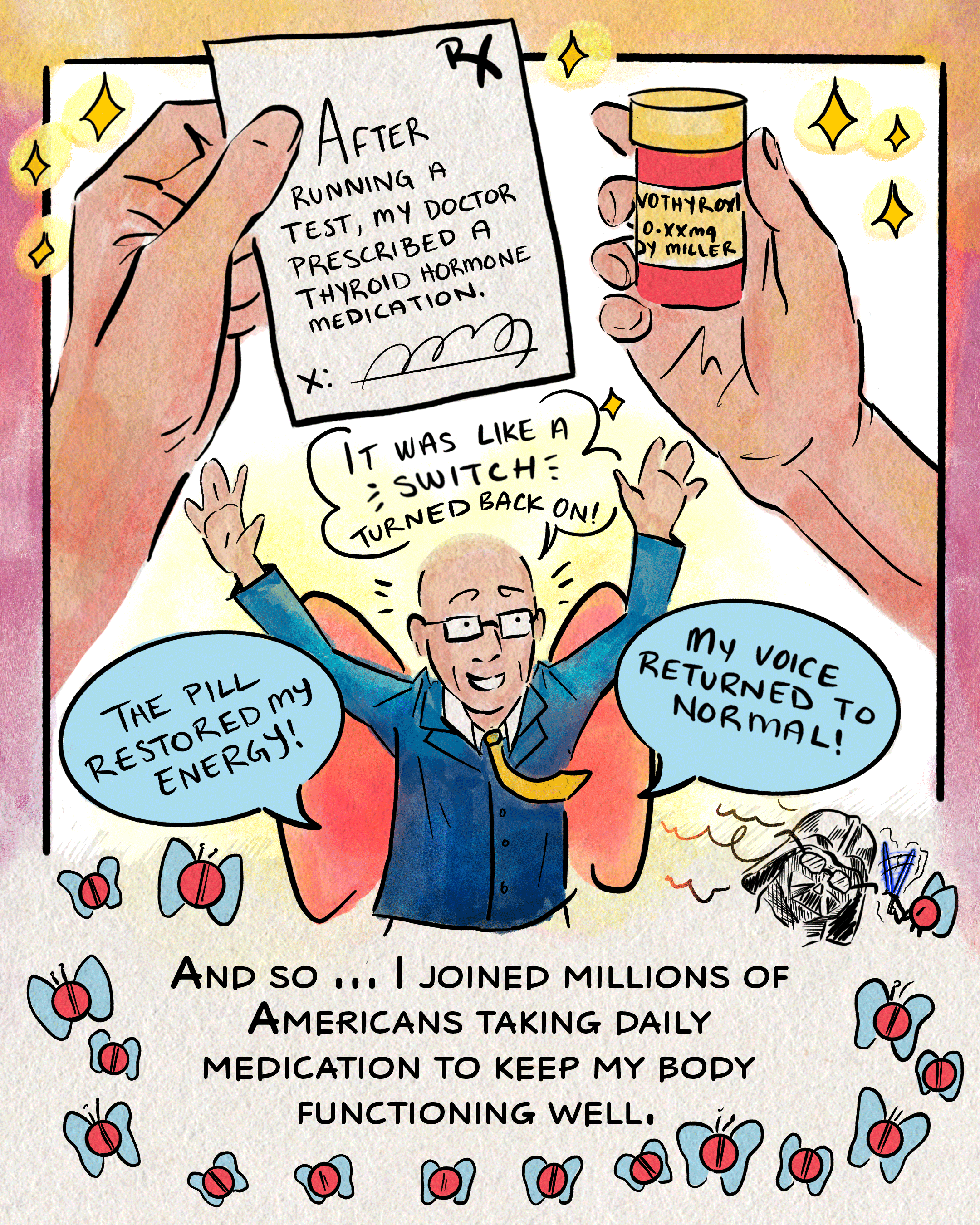


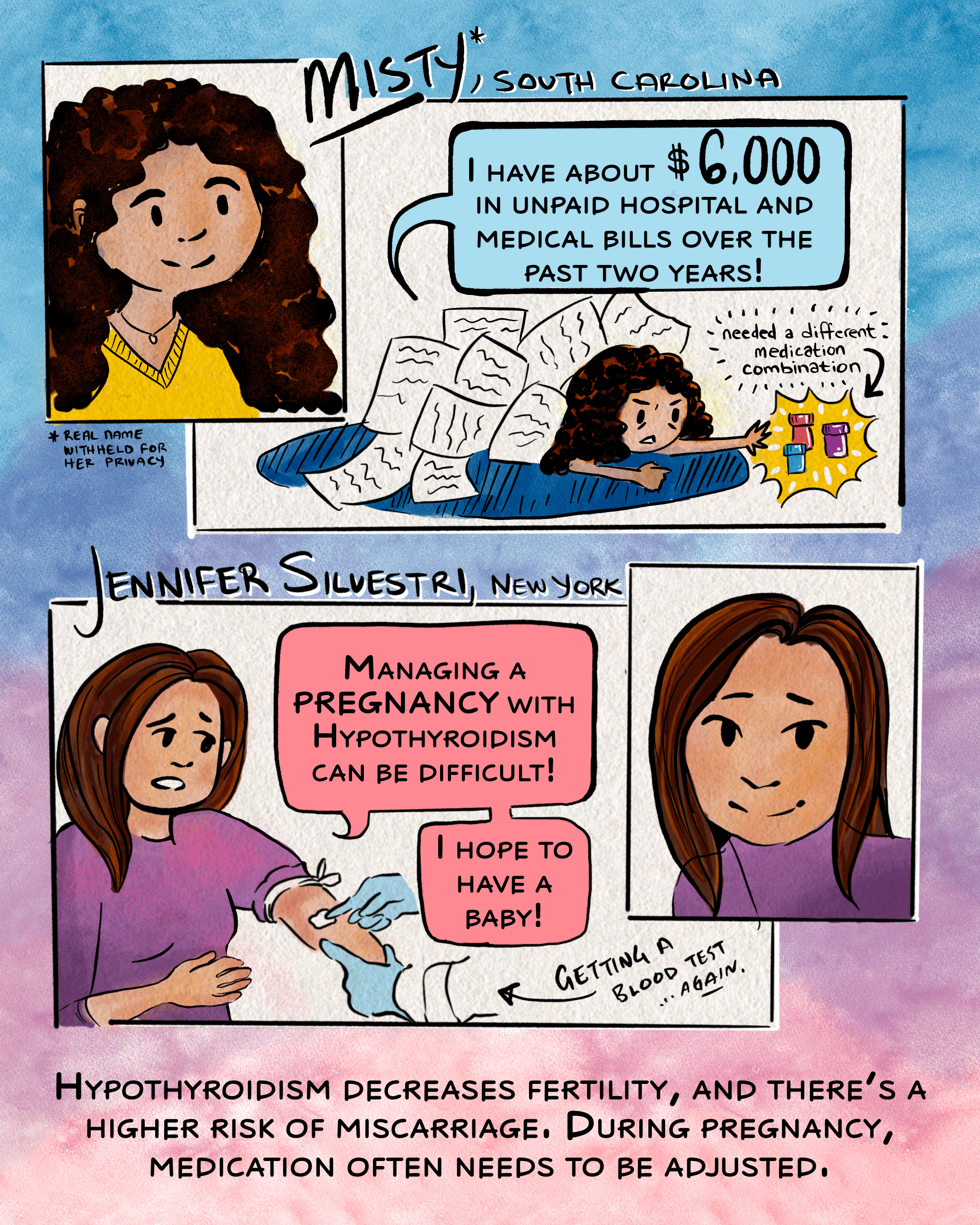
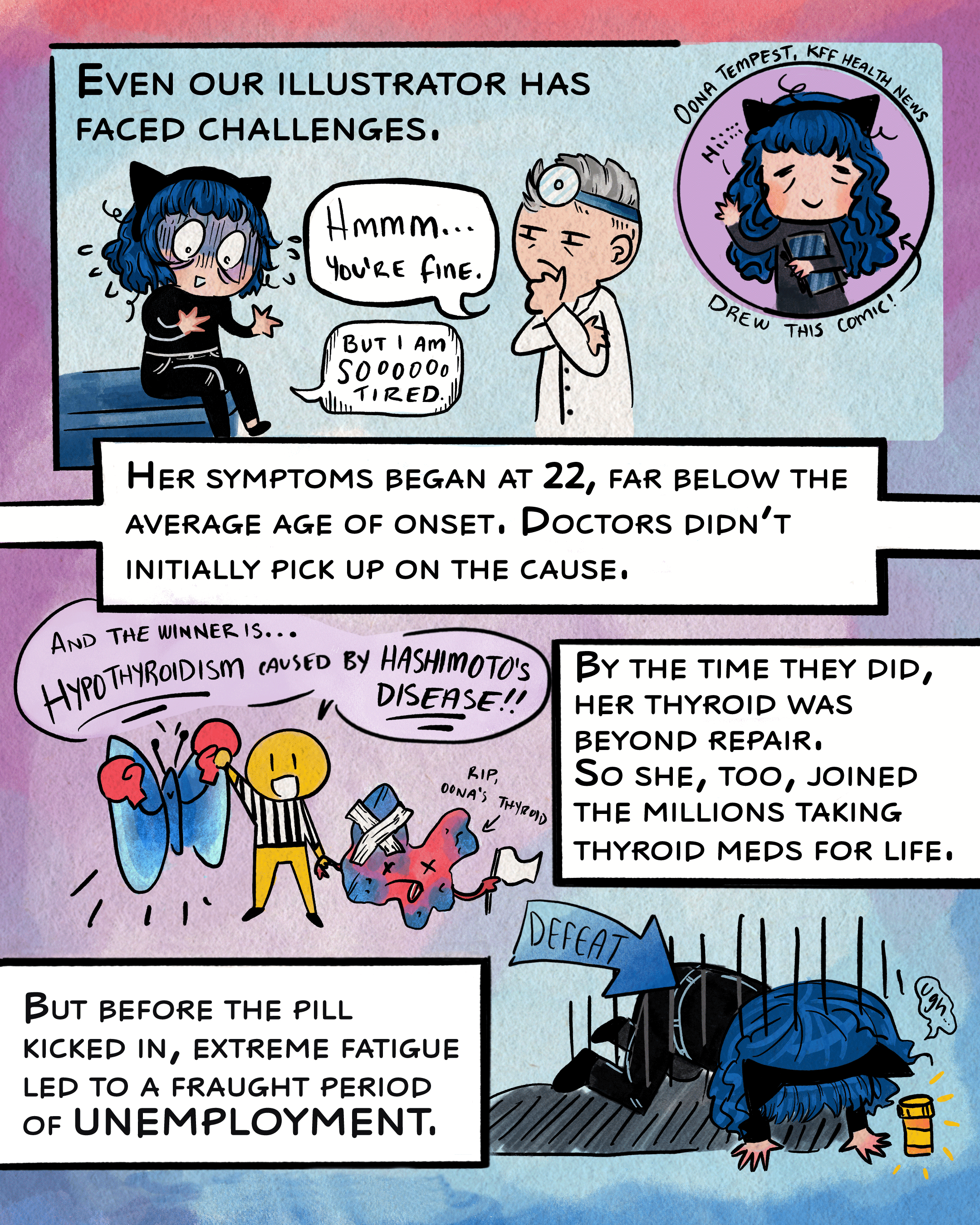
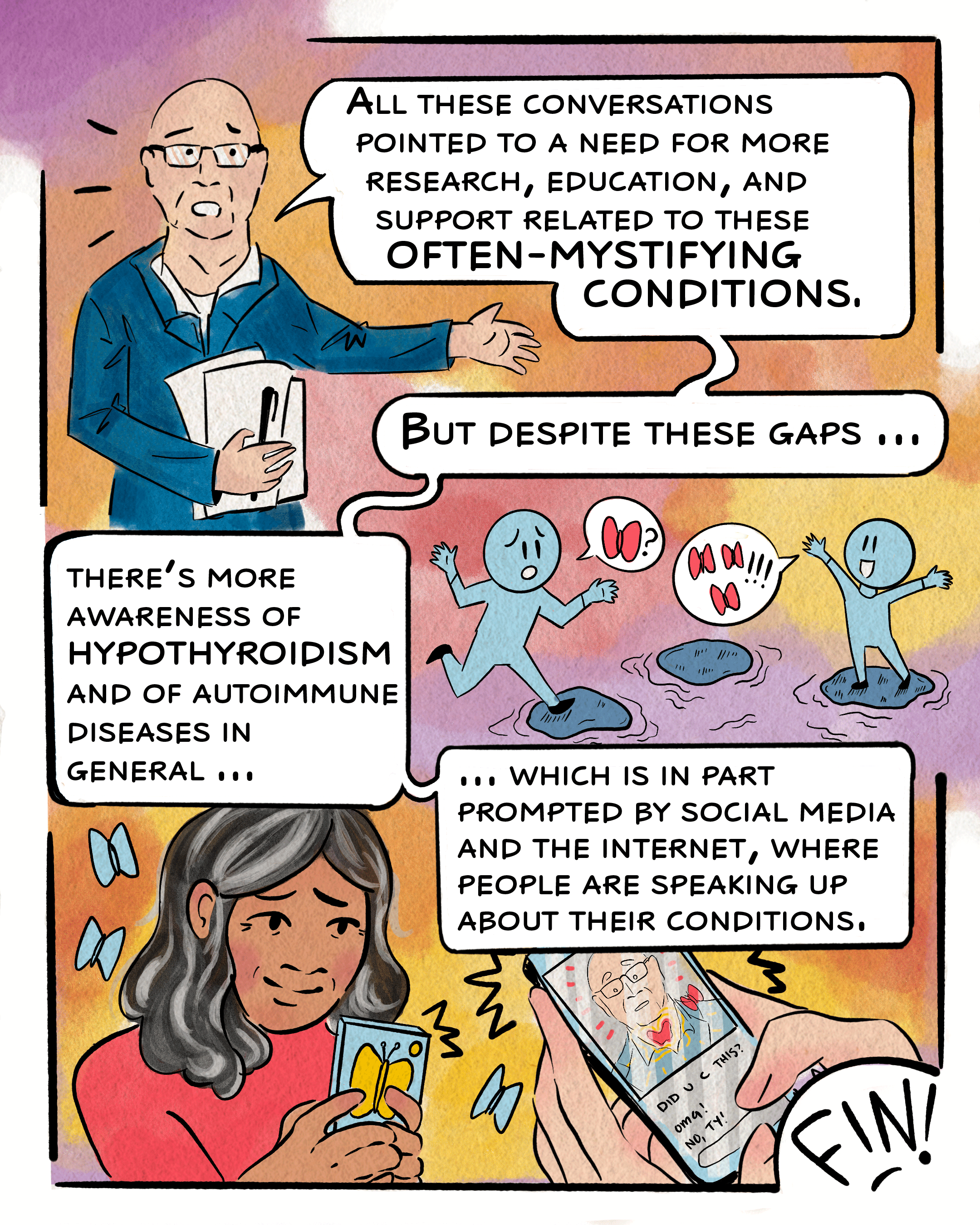
This illustrated report has been adapted from a KFF Health News article, “Many Autoimmune Disease Patients Struggle With Diagnosis, Costs, Inattentive Care” by Andy Miller.
Illustrations by Oona Tempest.
Creative direction and editing by Hannah Norman, with additional editing by Sabriya Rice.
Copy editing by Terry Byrne.
This article was produced by KFF Health News, a national newsroom that produces in-depth journalism about health issues and is one of the core operating programs at KFF — the independent source for health policy research, polling, and journalism.


